
Bandoneón Tutorial: The Inicial 1
In this bandoneón tutorial I explain the first of a series of preparatory exercises. After having dedicated a series of videos to the fundamental aspects
Having a bandoneon keyboard layout is fundamental to study the bandoneon and to know the correct position of the keys.
In this article I discuss and make available the keyboard layout for the bandoneon 142, the traditional bandoneon for tango and the most used worldwide.
The bandoneon is a German instrument born for German folk and Classical music, but its major widespread was in Argentina with tango.
There were many kinds of keyboard layout, but the one that was used in tango, and the most used nowadays, is the Rheinische Tonlage, usually called bisonoric bandoneon or diatonic bandoneon, improperly.
What’s the meaning of the “bisonoric” term? This word refers to the fact that the keyboard layout changes depending if you are opening or closing the bellows. For example, let’s consider the right keyboard.
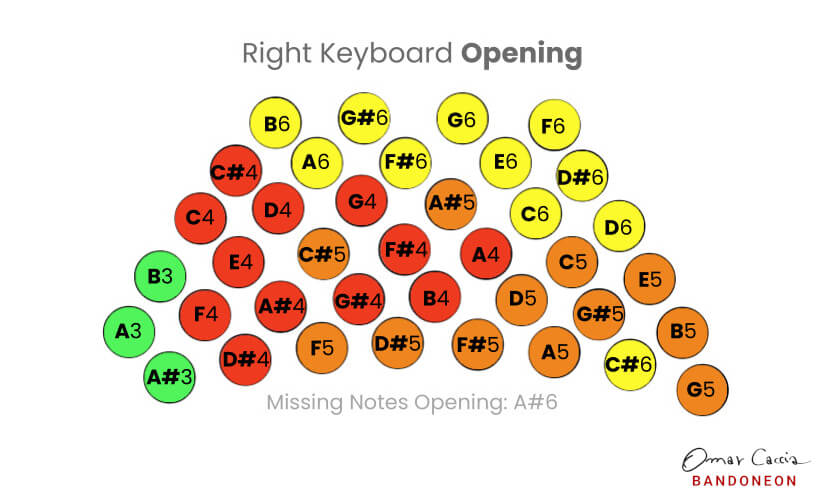
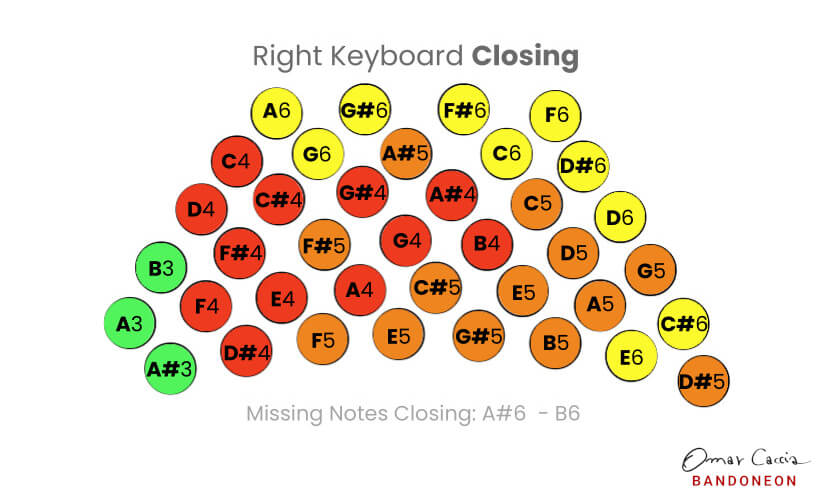
As you can see in the images above, many notes change depending if you are opening or closing the bellows. Now let’s see the comparison of the right keyboard with a piano.
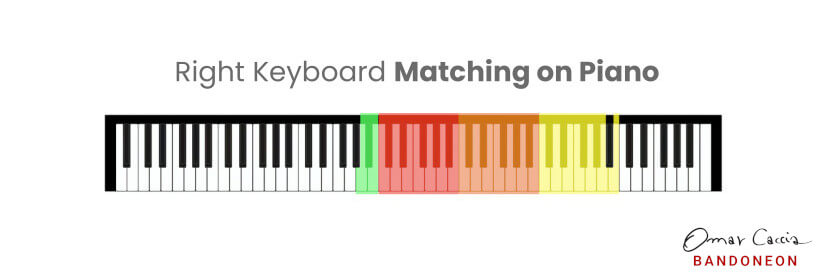
If you look the the image above, you can see that the keyboard start from A3 (the A in the third full octave on the piano) up to B6. This means that the bandoneon’s right keyboard range of notes covers more than 3 octaves.
Now let’s see the layout for the left keyboard.
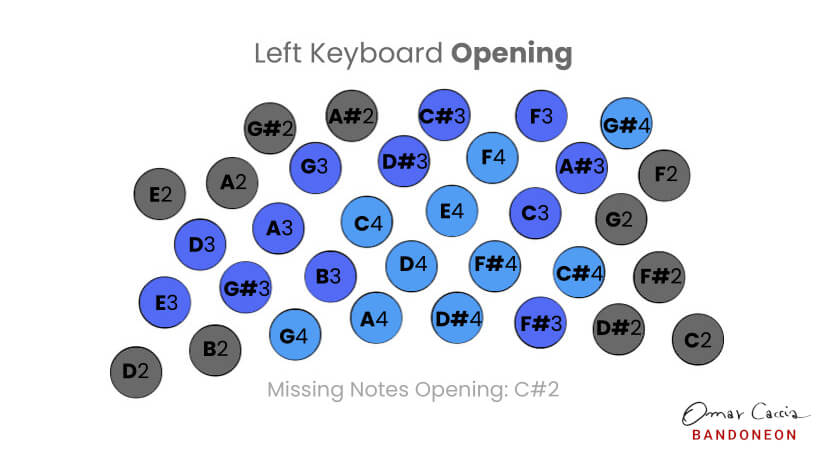
The left keyboard is the “bass” part of the instrument, where you find the lowest notes available on bandoneon. As in the case of the right keyboard, the layout changes if you are opening or closing the bellows.
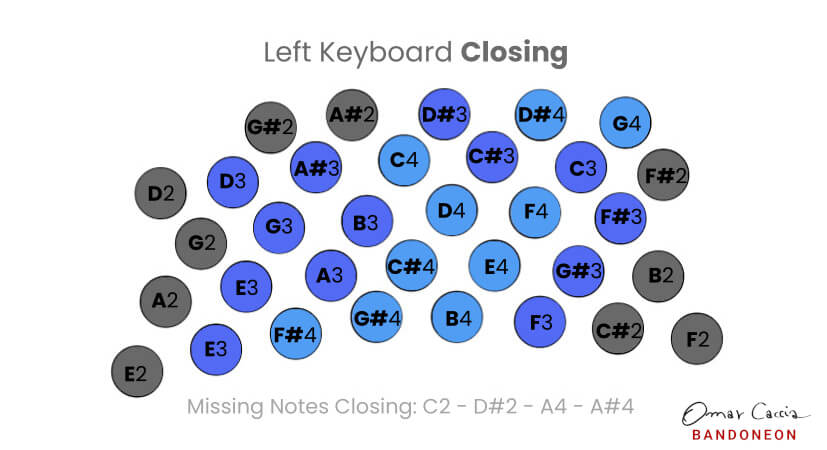
Let’s compare this keyboard with the piano: the lowest note is a C2, and the upper one is a B4. The left keyboard of the bandoneon covers almost 3 octaves.
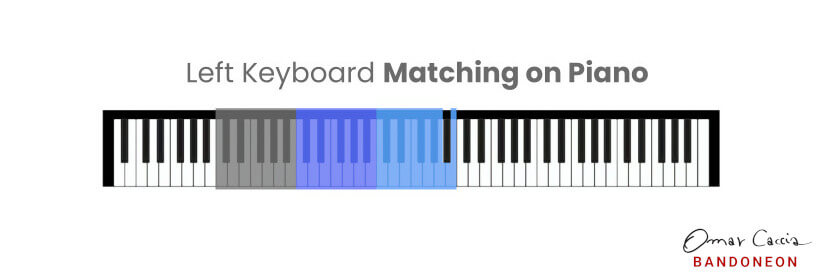
The bandoneon has a total range of notes covering almost 5 octaves, with a partial overlapping of the left and right keyboard from A3 to B4 (have a look at this article for a comparison of the bandoneon’s range of notes with other instruments).
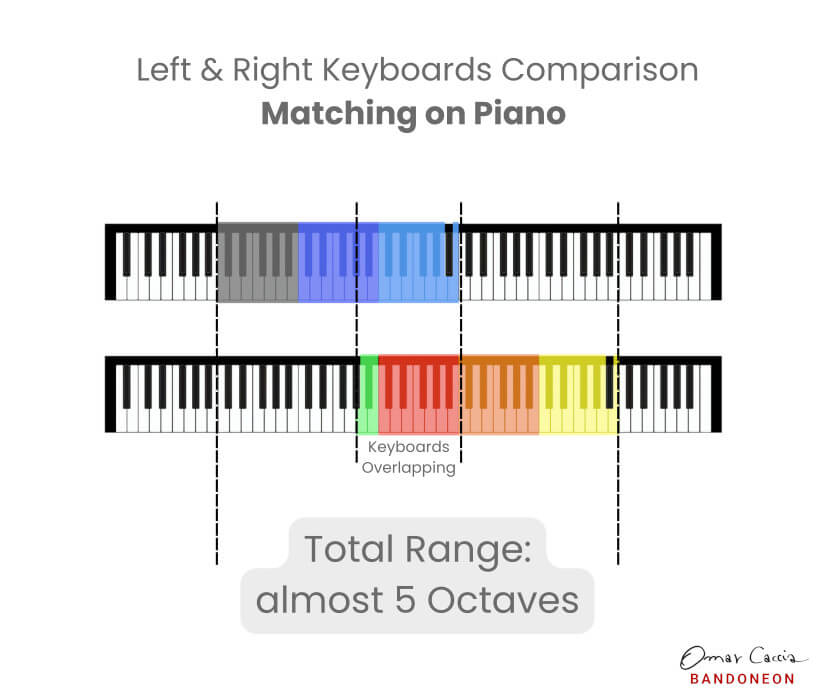
If you are learning bandoneon, or planning to study it, I’ve prepared a PDF with the bandoneon keyboard layout. Click on the download arrow to save the PDF.
Don’t waste a huge amount of ink if it’s not necessary!
You can download it here below a printable version of the PDF without colors: just the notes’ layout.
The number 142 refers to the amount of “tones” available in the bandoneon Rheinische Tonlage.
With 33 keys on the left keyboard and 38 keys on the right one, we have a total of 71 keys.
This number doubles if we take into account the fact that the instrument has two possibilities of playing, opening or closing. So here we come to the fateful number 142.
Many people wonder why the keyboard of a bandoneon is so chaotic, and why the keys are not arranged in a serial layout, that’s to say chromatically as in a piano or buttons accordion.
The answer lies in the way of the playing the bandoneon and in its ergonomics.
A serial chromatic keyboard wouldn’t be suitable to be played by a hand blocked by a strap, and it would be like blocking the hand of a pianist that should move freely on the keyboard.
The “chaotic” arrangement of the keyboard permits you to move your hand in a spiral motion, thus avoiding the fingers from being trapped in a very limited space on the keyboard.
In any case, there are also bandoneons with “serial” keyboards. They are called chromatic bandoneons or unisonoric bandoneon, and I have talked about them in more detail in this article.
I also dedicated a specific post to the keyboard layout of the “Péguri” chromatic bandoneons.
Download the material available in this article. Remember that I have made available a Learning Resources page of the site where I collect all the study material for the bandoneon, both for beginners and more advanced.
On the Learning Resources page you will find scores and study material directly from my bandoneon course at the Manuel De Falla Conservatory in Buenos Aires, as well as other material made by me.
Subscribe to the newsletter to stay updated on all blog content.
A warm greeting and…. a estudiar y a tocar!

In this bandoneón tutorial I explain the first of a series of preparatory exercises. After having dedicated a series of videos to the fundamental aspects

Learn about chromatic bandoneons! Download FREE PDF keyboard layouts for Peguri, Manoury, & Crosio-Caliero systems. Unisonoric bandoneon explained for beginners.
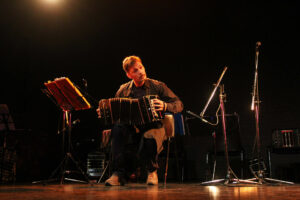
A Lesson from the Bandoneon to Move from Stage Panic to Expressiveness 2024 is coming to an end and I have been very busy during
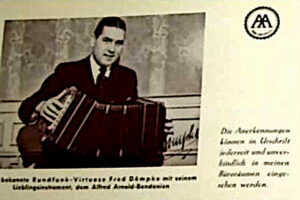
Who is Fred Dömpke and why should deserve more consideration among the bandoneon players? The bandoneon is conquering a significant role in jazz. Many bandoneon

The Bandoneon Price depends on the type of Bandoneon you want to buy. The equation is simple: if you want to learn to play the

Discussing Bandoneon Making with Baltazar Estol A few years ago I saw a video by M. Rodolfo Daluisio playing a bandoneon built by Baltazar Estol.